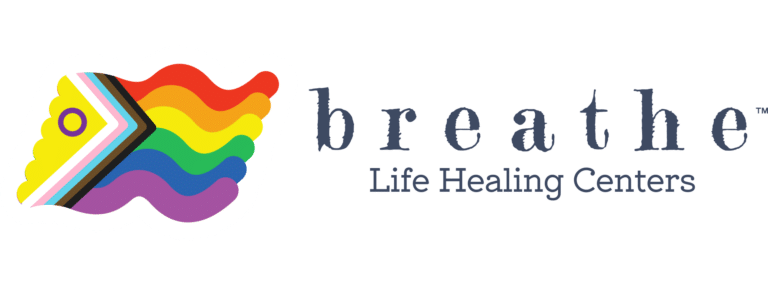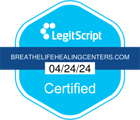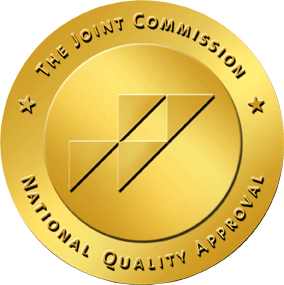How an Epidemic Makes Millions Suffer in Sickness

This is a love story really between a person and a powder. It is a thrilling and dangerous duet, with one of the most addictive partners on the planet: methamphetamine. Also called Meth, Ice, Speed, Crank, Chalk, Pookie (I am not joking), T, Tina, and other slang terms used across our nation, in every state, on thousands of streets. This once crunchy yellow drug gained popularity in the 1980s and has morphed from the homemade with off-the-shelf ingredients boost, to what is now more pure, refined, and often see-through and crystal-like. It is flooding in across the borders from Mexico – stronger than ever and more available too – most often manufactured and distributed by powerful drug cartels.
Meth is big business, and it means business as it has so many of our friends and family members by the throat.
How does one get crystal clear and recovered from this seemingly helpless state of addiction? One key component of this powdery partner is how it appears as a solution to many. Most who struggle with meth are not destitute, or homeless, nor near such a state, but instead hiding in plain sight, right beside us at work, church and school. The meth-addicted are our co-workers, friends and family.
So what is meth? How did it get so deeply dug in to our lives?
Methamphetamine is a super-charged stimulant going right to the heart of the central nervous system. Most meth use is recreational, and not to be confused with the sister-drugs in the prescription class of things that are consumed in the United States to treat those with attention deficit disorder or even obesity. This super-stimulant is so dangerous to law enforcement that the possession, manufacture and sale of meth or many of those raw ingredients used to make meth, is illegal in the United States and has been for decades.
Will Using One Time Make Me Addicted?
Meth is scary pure. With purity levels nearing 100%, what is today’s methamphetamine really like when used? That is a good question, and many people wonder the same. What does that sort of purity reality mean when addiction potential is considered?
Asked another way: how much does it take to make one an addict?
Highly addictive, many report that “first use” triggered a rapid physical and psychological dependency. Remember your first sexy sweet kiss, where your breathing was low and staggered and the world was on fire? It’s sometimes described like that, or compared to “feeling like I was suddenly a superhero!” In low to moderate use cases, meth boosts one’s mood, increases alertness and concentration, gives a powerful jolt of energy and helps stave off sleepiness or fatigue. Using meth often results in shedding weight. With higher use, meth often triggers psychosis, and the breakdown of muscle. Meth very quickly builds a deep bond with the body and brain, and the relationship is selfish. It insists that you have more, more, more meth.
How Do I Get Help If I Don’T Know Where To Turn?
Using insurance for treatment is a barrier for many. Across the nation, there are solid public and private programs helping people change their relationship with the drug.
There is hope to be had and resources to be found, if one looks and is a little bit tenacious.
Choosing treatment that is matched to the condition needing care is critical.
Imagine how we all, each one, have personalities with dull parts, sharp parts, and winning parts. Some more than others. You get the picture? That’s how treatment can be too. Programs have personalities from their structure, history, leadership, schedule, clinical qualifications of staffing, treatment modalities used – and more. Plus the financial qualification of getting help is a real part of the equation. Are you seeking publicly funded help, privately funded help, insurance-paid help or some hybrid of all of the above? So while getting someone who struggles help is important, as important is getting them appropriate help that matches what ails them, and secondly – what they might benefit from the most.
If a patient is unable to tolerate treatment due to being a trauma survivor for example, with a narrow window of tolerance for care, that is a critical item to consider when choosing the best help possible.
A Meth Addicted Person Is Sick, Not A Bad Human Being
How does one get better? From personal experience, I know my own independence day occurred in the summer of 2002. I had struggled mightily with meth, alcohol, nicotine and bulimia (an eating disorder) for years and had resigned to the idea that I would not get well.
I had vowed to never move to a needle to inject the drug, and that remained a barrier I didn’t cross even as I ingested meth every other way possible. Meth consumption routes include snorting the powder, swallowing it mixed in water or another liquid, smoking it, injecting into a vein or inserting into the rectum.
A truth: one suffering from addiction is much less discerning about quality control, safety and self-care. One day while using, they will ingest something with no idea what is IN IT, and the next they may refuse lunch because of the cilantro in the recipe. There is no rhyme.
Everything gets confused in addiction, that is for sure.
The Lines One Draws + Snorts
Then change began for me. Before I knew it my very state had began to change from a hopeless state of an addicted adult who had survived enormous trauma to that of a recovering man. I honestly remember shifting first from a state devoid of hope to the idea that possibly I might recover. It was hard, dusty work I must say, filled with self-examination, surrender to help from others and the sometimes mindless repetition of peer to peer support groups that peppered my days.
In my story, meth was the first to go on my list and since that day, I have not picked up and used the drug in any way. How did such a shift happen?
I said yes to help. I was given hope. I did not want to die.
There is strength in numbers and, over time as the foggy thinking cleared, knowing my friends and support system were on my side helped tremendously. I count the help of others as a miracle of sorts. It allowed what I simply was unable to accomplish on my own, to happen.
Alcohol exited my life next as I remember with a swan song drink (or six) on February 4, 2003. Then, over more time, it became clearer that lighting and inhaling a burning object that delivered nicotine had to go too, so smoking was up next for an exit. Over still more time the eating disorder that was threatening my life simply had to be addressed. It was killing me slowly, and here I was recovering in so many areas, with this one area causing me physical and emotional pain. It was a painful plunge into acceptance and therapy – and looking back the eating disorder work was the hardest and most difficult to remain on track.
Yet it was all worth it. It is still worth it. To recover from a seemingly impossible state of illness to a vibrancy of living is incredible. Getting good is hard work. It is doable with help. I do know that to be true. No doubt in my mind.
Lost Pieces Uncovered, Discovered & Recovered
The story of recovering pieces of life lost due to addiction is different for each and every one. There was so much stripped away by the time I put my hand out for help that summer of 2002, that it was more a fresh start than the reclaiming of an old success story. I examined the assets and liabilities and gave some good long consideration to what I might do with this life.
My own recovery landing became one anchored in helping others. I found the “step work” from peer to peer support groups to be very useful in growing, healing and recovering. Once I hurt less and recovered more, my dreams for life blossomed as this new season settled in. New growth became more deeply rooted over time, and as I considered how stability had replaced a tentative early recovery, I became encouraged it was not just a temporary respite from the horror once lived.
I applied and then started back to school. People I met along the way helped me. There are so many people’s fingerprints on my story that a forensic examination would show the touch of hundreds.
I was mentored by Dr. Judith Landau. My work was discovered in finding relevance and inspiration in Dr. Landau’s work. A mission to match the passion came to life. Deb Hughes, who had been the architect of the Rosewood system of eating disorder hospitals and the Rosewood Institute became a friend and mentor to me next, and my life expanded and changed yet again.
I failed to dream big enough, to even begin to encompass what has occurred in real life. A life big and bold with six books written under my belt, having helped thousands recover, has replaced the tiny tent I called home, back in that summer of 2002.
I don’t miss the suffering and misery one bit. I now mine strength from those low spots of the past.
Types Of Meth Addicts Aka: Tweakers
Over the years I have come to apply a group of archetypes that generally covers meth addicted folks I have met along the way. “Tweaker” is a term many meth addicted folks apply to themselves, so I am doing no disservice to them (or me really) in using it here, and ID’ing four categories. They are:
- Project Tweaker
- Sex Tweaker
- Drinker Tweaker
- Eater Tweaker
The “Project Tweaker” works a lot, and uses meth initially to work harder and smarter. Over time, the useful impact of the drug is replaced by the driving addiction, and consumption fuels decisions and routines.
The “Sex Tweaker“ uses meth and erectile drugs to engage in sex that would in real-life be unlikely to achieve. Boundaries get stretched. Varied roles are explored and embraced. Orgasm is not the end, but a respite for the next round. For this type, often gay men, “ChemSex” is a very real and unique category of fused addictive behavior.
The “Drinker Tweaker” uses methamphetamine to drink longer and more successfully. When one gets a little “boozy” this type uses some meth to “pick them up” and increase presence of mind. When they get too “hyper” from meth, they will use more alcohol to even-out the experience.
Finally, the “Eater Tweaker” uses meth to mollify hunger and oftentimes in a way, “treat” an underlying eating disorder.
Four categories describing different sorts of drivers of use and addiction. In the end, the same destination is reached: one of a human being, stuck in repetitive cycle of craving, meth use, come down, regret, repeat. It is an illness, a crisis, no doubt.
I think it is useful to ID the types here under the heading of ADDICT to help friends and family, and the community at large, better understand how different emotional and trauma-wounded needs trigger this relentless drive to use, and escape, and how it shows up in those we love.
The Brain & Body On Meth
The long term impact of meth on the brain is brutal and deadening. It impacts the brain’s natural regulation of dopamine production and serotonin. The “come down” is the resulting “detox” where the addicted person crashes into low-functioning lethargy after coming up for air from a binge.
While unlike an alcohol detox (which requires medication assistance and medical care) meth detox is brutal emotionally. Depression replaces the drug’s “high” resulting in a psychological crash made better by rest and recovery – or alternatively, more meth.
I Wanna Be A Meth Head When I Graduate
As a boy I wanted to grow up and be outgoing, popular and athletic…not necessarily in this order, and meth gave me all three. Growing up in Eugene, Oregon, meth was part of the fabric of the college town where the Lamm Family settled when I was just two years old. The Grateful Dead came through town every year or so and speed and psychedelics were elements of the community culture that made the music munchier, the party last longer, and everyone prettier, no doubt. The first time I used meth, it was in concert with alcohol and LSD. I was 19 and in downtown Portland, Oregon. I felt transported to another state – one where I was more social, didn’t want to eat (a noted benefit for a person with an eating disorder) and I felt that in a flash the world was mine to discover!
Most of my drug use occurred in tandem with alcohol and other drugs. Rare was the day when I would use just one substance in my body. GHB is a party drug that is also often part of the mix – an alternative to alcohol with its depressive effect, that is winning converts for its zero calorie dietary cost and easy to manufacture at home with ingredients purchased easily on the web. While GHB is increasing in popularity in 2019, it was never part of my own personal experience.
I Don’t Drink, And I Don’t Chew
While dad was an Evangelical Friends Pastor, the party of the hometown village vibrated around me, there in Eugene, Oregon. I wanted to be anything but addicted and ill as an adult, yet that is the hand I picked up and held for two decades. I remember clearly my closely held plans for the future had no room for drugs, period. The Lamm boys would say “I don’t drink, and I don’t chew and I don’t go with girls who do” That funny saying didn’t cover half of it.
How did it come to be that I was more attracted to what I could put in me, to even myself out and self sooth, than really anything else? How had I gone from the one who said he would never use a drug nor taste alcohol, to a late-stage addicted man and suffering fool who could not say NO to increasingly pure street market meth? Like the frog in the pan on the stove in cool water, with the burner put on low, the death march went in slow motion for me for years and years.
The Evolution Of Meth: 2019
Meth today has never been more attainable, nor more powerful. Often mixed with other drugs the current cycle of meth on the streets in 2019, often features a mixture of meth and fentanyl. The powerful synthetic opioid fentanyl has been described as making “the meth smoother, and the high better.” Most consumers have no idea their product is tainted with the deadly and toxic mixer these days, and as recently as early 2019 the LA County Sheriff’s Department found after testing seized meth product that nearly 40% of the drug had been cut with fentanyl. Meth just a few years ago would test at 38% pure, and today it is breaking purity records, the averages in Q1 2019 are consistently topping 90%.
“The purity of the drug has never been higher, resulting in more acute patients calling for help,” commented Breathe Life Healing Center’s Chief Medical Officer Steven Karp, D.O. “The meth is pure, and the route of use, more and more injection-based, is raising concern across the nation.”
In all the news though, do not lose sight of how at the end of the rope, is hope. I recovered. Many others recovered, too. You and yours are not without hope. Be encouraged to do more than pray for change. Be encouraged to make a plan, take action and become a driving force for change in your community and the life of those you love.
Brad Lamm is an author & educator who founded the nation’s leading sub-acute trauma program Breathe Life Healing Center. His books include HOW TO HELP THE ONE YOU LOVE. Lamm is a Certified Intervention Professional, and serves on the board of the *Association of Intervention Specialists*.












